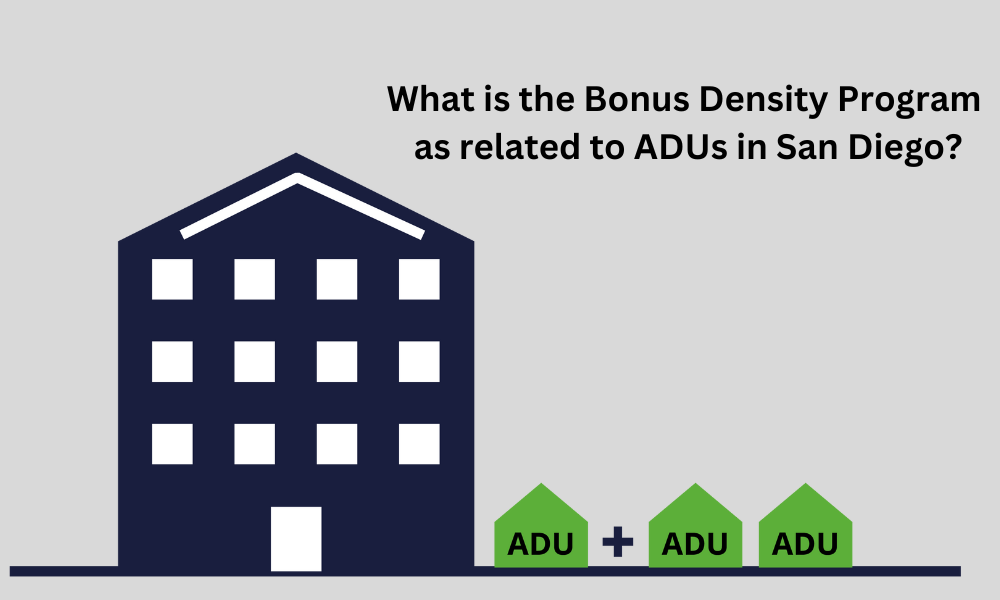Bonus Density Program as related to ADUs in San Diego
In the face of a persistent affordable housing crisis, cities like San Diego are continuously seeking innovative solutions to expand housing options for their residents. Two fairly recent impactful initiatives in San Diego's efforts to address this issue are Accessory Dwelling Units (ADUs) and the Bonus Density Program. In this blog, we will delve into the significance of ADUs and the Bonus Density Program, and how they are contributing to unlocking affordable housing in ‘America’s Finest City’.
The City of San Diego has implemented Bonus Density Regulations as part of its comprehensive approach to promoting affordable housing. These regulations provide an opportunity for developers to build additional units beyond what is typically allowed in exchange for including affordable housing units. The Bonus Density Program acts as an incentive for developers to prioritize affordable housing in their projects, creating more diverse and inclusive housing options.
Specific requirements and incentives vary, but often involve allocating a certain percentage of the additional units as affordable housing. To ensure the affordability of these units, the developer is usually required to cap the rental rates at levels affordable to households within a certain income range. Suppose an investor plans to construct an ADU in a neighborhood that allows for a maximum of one added ADU based on the existing zoning regulations. However, under the Bonus Density Program, the developer has the opportunity to increase the density and build more units in exchange for providing affordable housing.
In this example, the investor could propose to build 3 ADUs instead of one, an increase of 300%. To qualify for the additional 2 units, the investor would need to incorporate an affordable housing unit into the project. The specific requirements may vary, but let's assume the city's regulations stipulate that 50% of the additional units (1 unit in this case) must be designated as affordable housing. By participating in the Bonus Density Program, the investor gains the advantage of increased density, enabling them to maximize the use of the property and potentially generate a higher ROI (return on investment).
It's important to note that the specific requirements, percentage of bonus density, and affordability criteria may differ in practice and may vary based on the specific location, zoning regulations, and housing goals of the City of San Diego. The program's details would be established through the city's planning and development processes.
In conclusion, San Diego's commitment to unlocking affordable housing through ADUs and the Bonus Density Program demonstrates a proactive and innovative approach to increasing the availability of affordable housing. By encouraging the construction of ADUs and providing incentives for private investors to incorporate affordable units, San Diego is fostering a more inclusive and sustainable housing landscape. As the city continues to refine and expand these initiatives, the vision of affordable housing for all San Diego residents becomes increasingly attainable. The team at OneStop ADU has the experience to navigate this complex landscape and can help maximize your return on investment by building the maximum allowable number of ADUs if your property qualifies for the Bonus Density Program.


